7 Smart Tips for Designing a Shared Nursery and Toddler Room
Designing a room that meets the needs of both a baby and a toddler can be a delightful challenge. It requires a blend of creativity, practicality, and foresight to create a space that is safe, functional, and capable of evolving with your children. A well-planned shared nursery and toddler room should cater to the differing needs of each child, promote harmony, and minimize clutter. In this post, we’ll walk through seven smart tips to help you design a shared space that your little ones will love.
1. Choose a Neutral Color Palette
Why It Works: Neutral colors provide a serene backdrop that is soothing for both babies and toddlers. They also offer the flexibility to add pops of color through accessories and decor, which can be easily changed as your children grow and their tastes evolve.
Action Steps:
- Start by selecting a base color like beige, cream, light gray, or soft white.
- Choose two to three accent colors for a bit of contrast and visual interest. These can be incorporated through wall art, bedding, and toys.
- Consider using wall decals or removable wallpaper for a touch of fun that can be easily updated.
Estimated Cost: Quality paint and supplies can cost between $50 and $200, while removable wallpaper or decals can range from $20 to $100.
Estimated Time: Painting a room can take 1-2 days, including preparation and drying time. Applying decals or wallpaper may take a few hours.
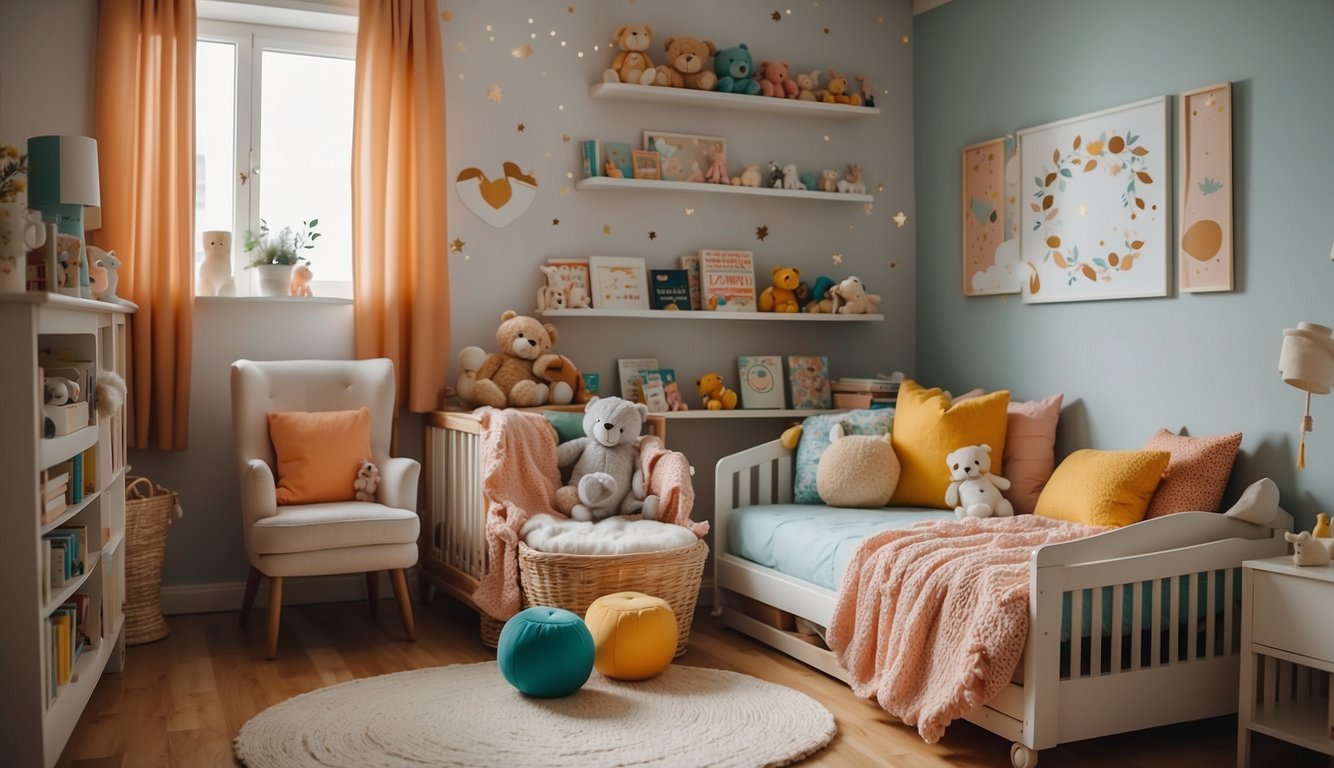
Practical Tips:
- Opt for paint that can be scrubbed clean, as little hands (and mouths) can be messy.
- If you’re not sure about color choices, test out paint samples on the wall to see how they look at different times of the day.
2. Invest in Convertible Furniture
Why It Works: Convertible furniture is designed to adapt to your child’s growth stages, which means you won’t have to replace items every few years. This not only saves money but also maintains a sense of familiarity and comfort for your children.
Action Steps:
- Research cribs that can be converted into toddler beds. Some models even transform into full-size beds later on.
- Look for dressers with a removable changing table top. Once diaper days are over, you’ll still have a functional piece of furniture.
- Consider a rocker or glider that can later serve as cozy seating for storytime as your children get older.
Estimated Cost: A convertible crib can cost anywhere from $200 to $800, while a versatile dresser may set you back $150 to $600.
Estimated Time: Expect to spend a few hours researching and purchasing the furniture. Assembly time will vary, but set aside at least an afternoon.
Practical Tips:
- Make sure any furniture you buy meets current safety standards.
- Register your furniture to stay informed about any recalls or safety notices.
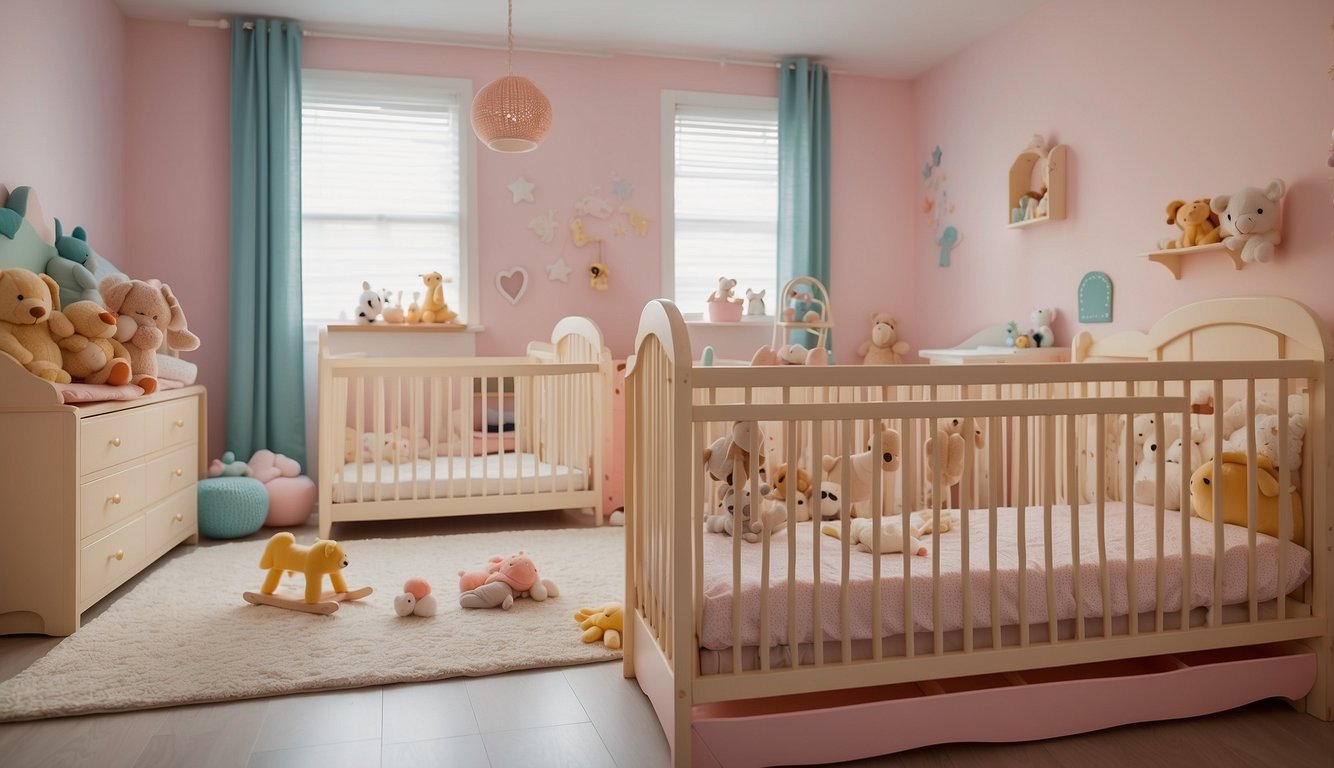
3. Create Defined Spaces
Why It Works: Designating specific areas for each child helps them understand their own space and respect their sibling’s area. It can also aid in organizing the room by clearly separating sleeping, playing, and storage zones.
Action Steps:
- Use a bookshelf or a curtain as a room divider to create distinct areas within the room.
- Place an area rug in the play zone to define the space and add a layer of comfort and warmth.
- Personalize each child’s sleep area with their own bedding and a few favorite items to make it feel special.
Estimated Cost: Room dividers can range from a simple curtain for about $20 to more elaborate bookcases that can cost up to $300. Area rugs can be found for $50 to $300, depending on size and quality.
Estimated Time: Setting up these defined spaces can take anywhere from 2 to 4 hours, not including shopping time.
Practical Tips:
- Ensure that any room dividers are securely anchored to prevent tipping.
- When selecting rugs, choose ones that are easy to clean and durable enough to handle frequent play.
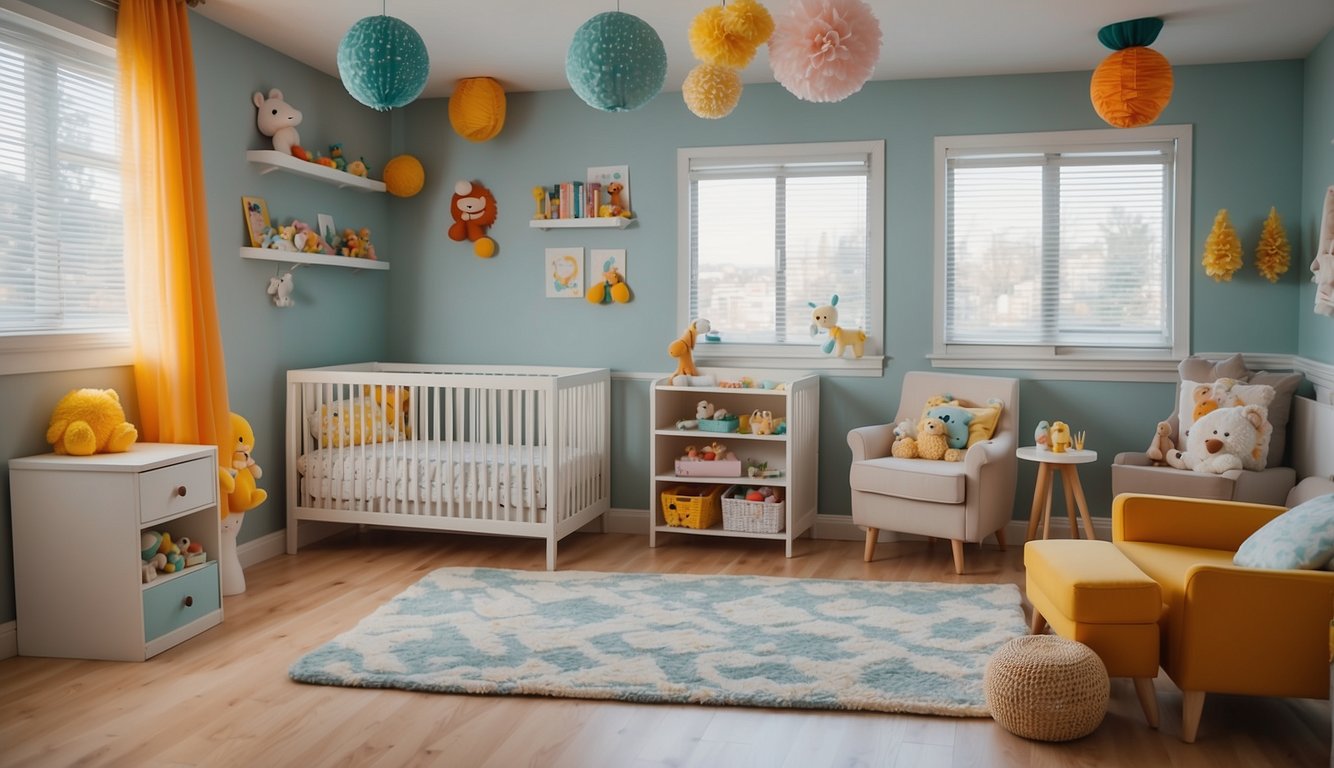
4. Emphasize Vertical Storage
Why It Works: Vertical storage solutions make the most of the space you have by utilizing walls and the back of doors. This approach keeps the floor clear for safe play and makes it easier to organize toys, books, and clothes.
Action Steps:
- Install floating shelves at a safe height to store and display books, toys, or decorative items.
- Use wall hooks to hang outfits for the next day, which can help with morning routines.
- Consider tall, narrow bookcases for storing bins of toys or baskets of diapers and baby essentials. Ensure they are anchored securely to the wall.
Estimated Cost: Expect to spend around $100 to $500 for a combination of shelves, hooks, and bookcases. The cost will vary based on the quality and quantity of storage solutions you choose.
Estimated Time: Installation time for vertical storage can range from 3 to 5 hours, depending on the complexity of the storage systems and whether you’re doing it yourself or hiring help.
Practical Tips:
- Keep the most frequently used items on lower shelves so they are easily accessible to you and, eventually, to your toddler.
- Use clear storage bins or labels to quickly identify contents and make clean-up easier.
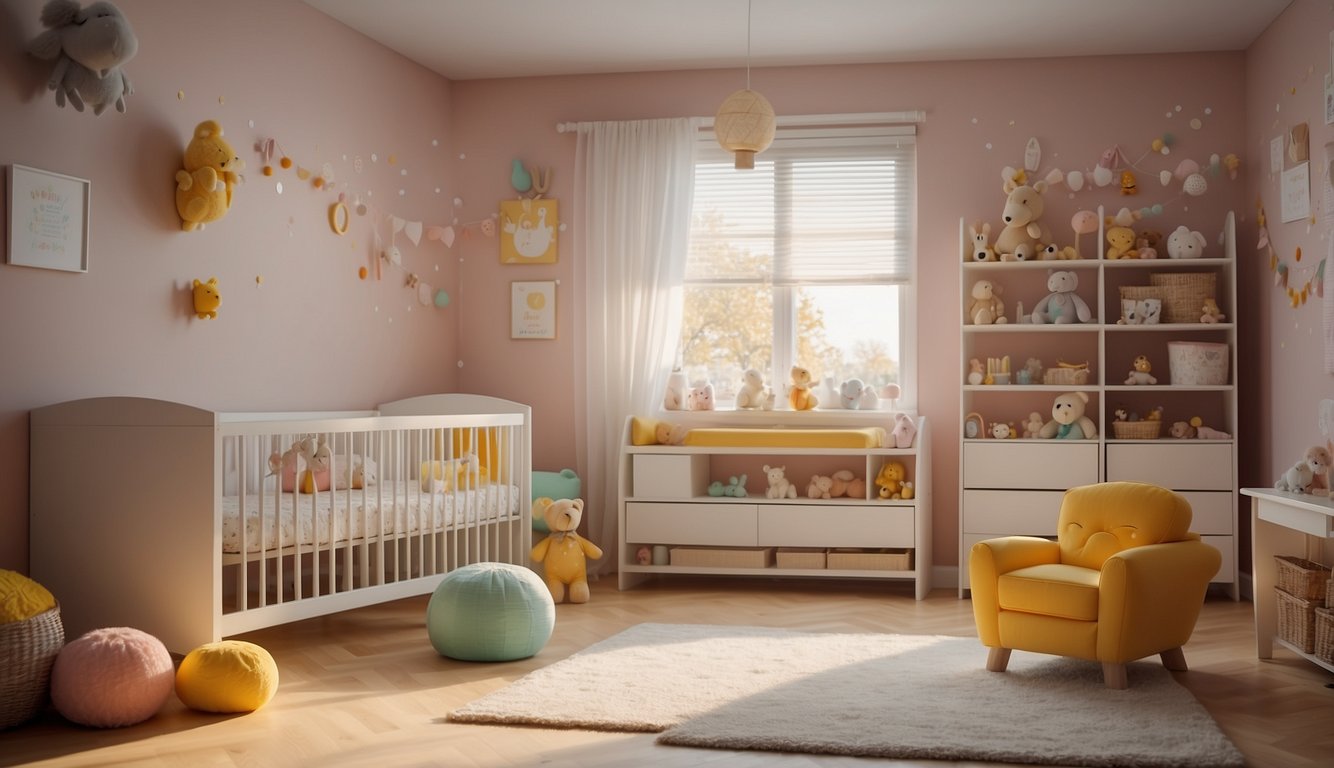
5. Incorporate Multi-Functional Play Areas
Why It Works: A play area that is designed to be used by both a baby and a toddler can encourage sibling bonding and ensure that both children have access to age-appropriate toys without taking up too much space.
Action Steps:
- Choose a soft play mat that both children can use for tummy time, crawling, and sitting.
- Select toys that have a wide age appeal, such as blocks that can be stacked by a toddler or simply explored by a baby.
- Use a low shelf or bin to store toys, which can be easily accessed by the toddler and serve as a place to put toys away when playtime is over.
Estimated Cost: The cost for a multi-functional play area can range from $100 for a simple setup with a play mat and a few toys, to $400 for a more elaborate setup with storage units and a larger variety of toys.
Estimated Time: Setting up a play area can take 2 to 3 hours, including the organization of toys and the arrangement of furniture.
Practical Tips:
- Rotate toys regularly to keep both children interested and to avoid overstimulation.
- Ensure that all toys are safe for both age groups, with no small parts that could be a choking hazard for the baby.
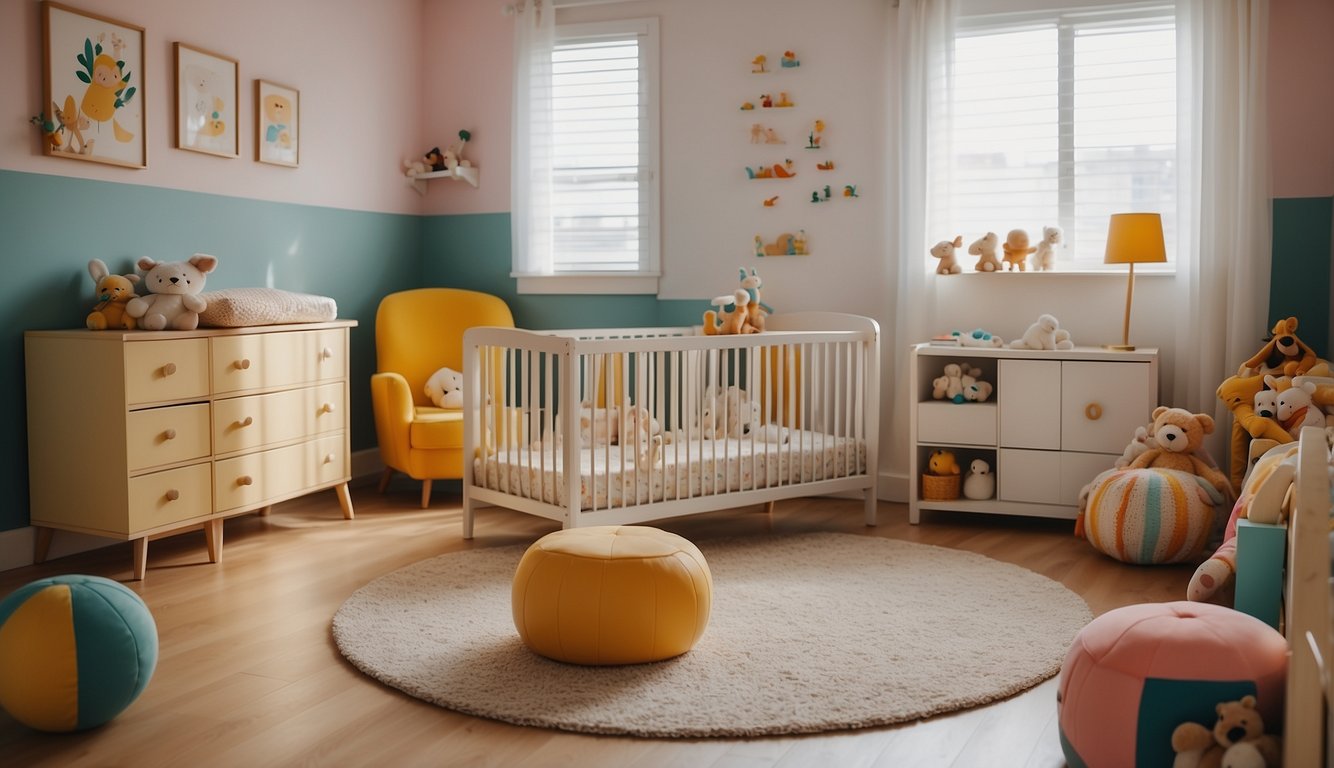
6. Ensure Adequate Lighting
Why It Works: Proper lighting is crucial for creating an environment that is both functional and cozy. It can influence mood, playtime energy, and relaxation before bedtime. Having different lighting options allows you to adjust the atmosphere to suit various activities and times of day.
Action Steps:
- Install a central ceiling fixture that provides bright, even light for playtime and other active moments.
- Add task lighting, like a table lamp or a reading light, in the toddler’s area for focused activities.
- Incorporate soft lighting options such as nightlights or wall sconces to provide a gentle glow that can help both children feel secure at night.
Estimated Cost: A combination of lighting fixtures and bulbs can cost between $50 and $200, depending on the types and quality of lighting chosen.
Estimated Time: Setting up additional lighting can take 1 to 2 hours. If you’re installing new fixtures, you may need to budget more time or consider hiring an electrician.
Practical Tips:
- Choose LED bulbs for their long life and energy efficiency.
- Consider smart lighting options that can be controlled remotely or programmed to change with your children’s routines.
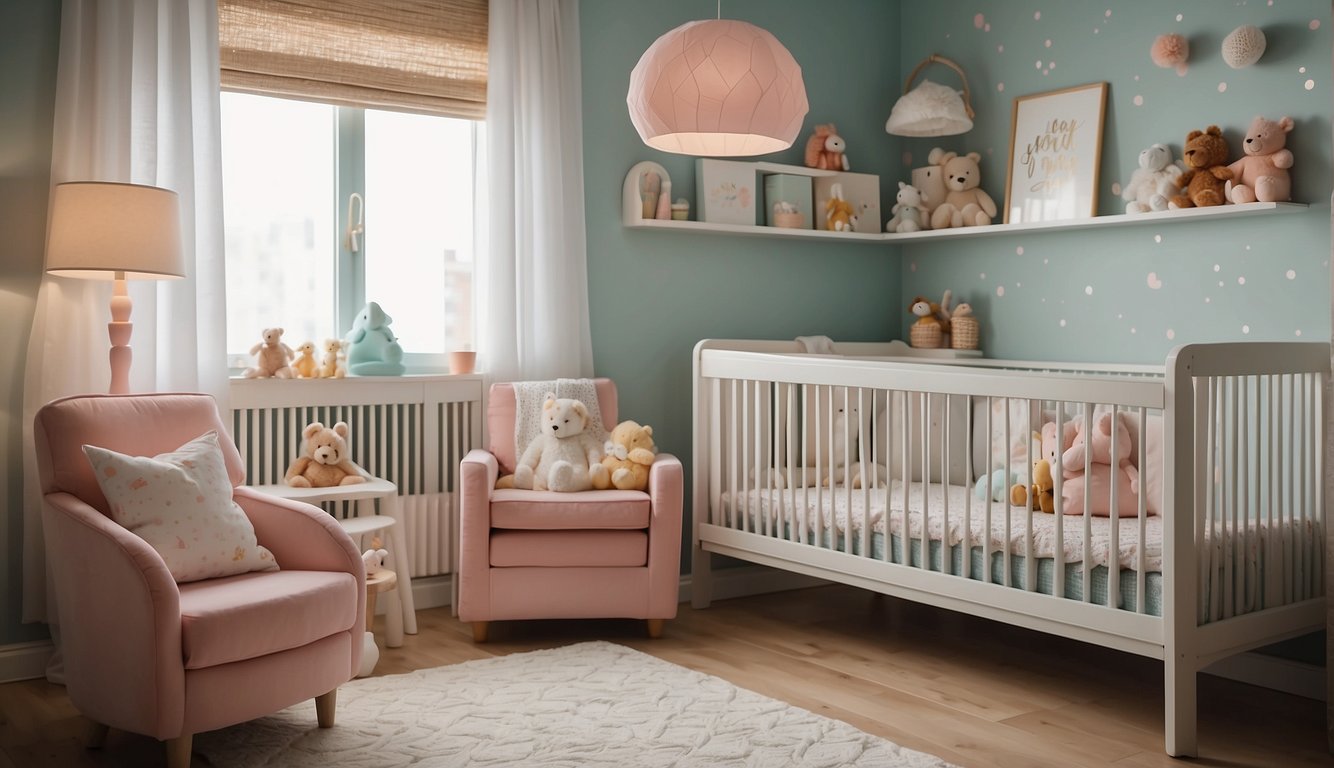
7. Plan for the Future
Why It Works: When designing a shared room for a nursery and a toddler, it’s important to think ahead. Children grow quickly, and their needs and preferences will change. Planning for the future can help you avoid frequent, costly redesigns.
Action Steps:
- Opt for decor elements that have a timeless appeal, like classic patterns or artwork that can grow with your children.
- Choose furniture with simple lines and neutral colors that can be easily updated with new hardware or a coat of paint.
- Leave space in the room for future additions, like a desk for homework or extra storage for toys.
Estimated Cost: Depending on the quality and flexibility of the items you choose, you might spend between $200 and $600 on future-proofing the room.
Estimated Time: Planning for future changes can take 3 to 4 hours, as it involves considering long-term needs and how the space can be adapted over time.
Practical Tips:
- Keep a list of potential future needs and plan your space accordingly, so that you can make changes without a complete overhaul.
- Involve your toddler in some of the design choices to ensure the space reflects their growing personality and interests.
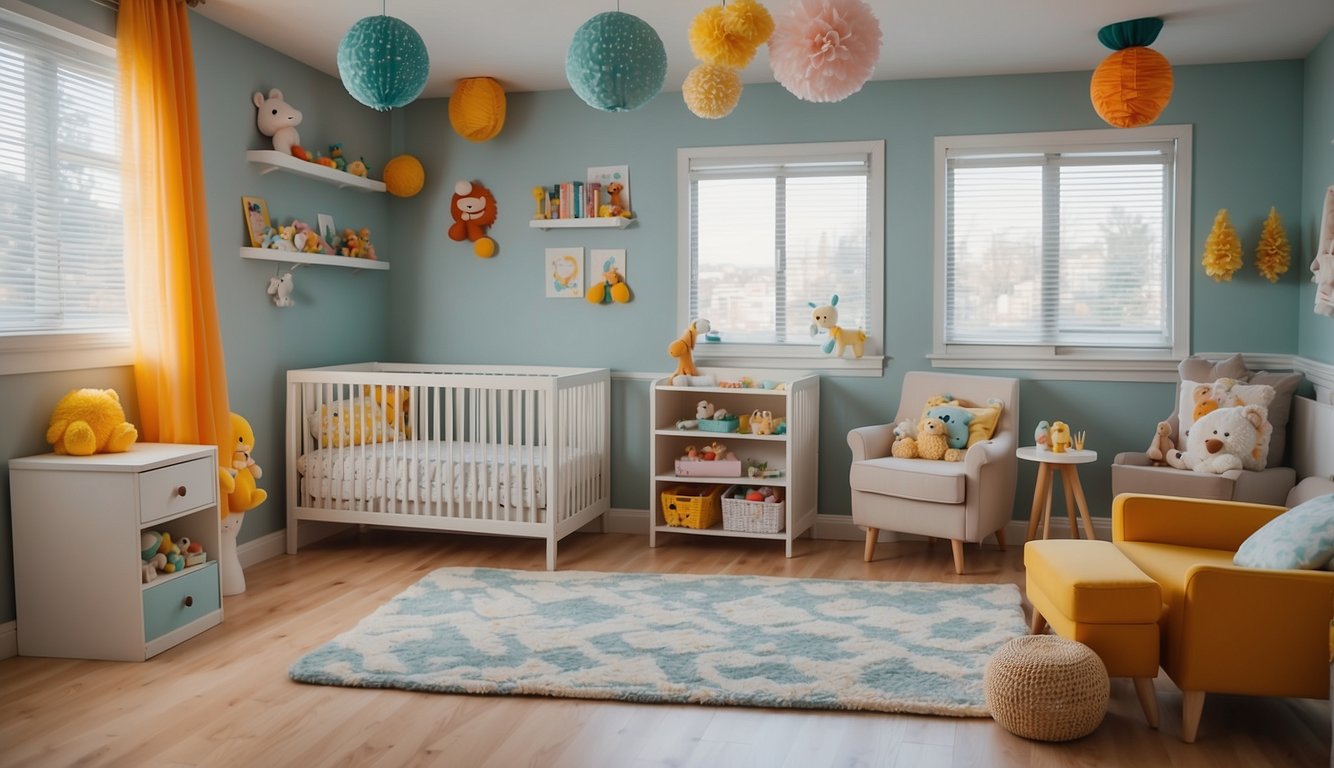
Conclusion
Creating a shared nursery and toddler room is an exercise in strategic design and thoughtful planning.
By choosing a neutral color palette, investing in convertible furniture, creating defined spaces, emphasizing vertical storage, and incorporating multi-functional play areas, you can design a room that feels cohesive, organized, and adaptable to the changing needs of your growing family.
Let Us Know How We’re Doing!
Did this expertly prepared resource answer your question?
Do you have another question about home maintenance, home improvement projects, home appliance repair, or something else?
Get more information, send in questions and keep the discussion going by contacting the I’ll Just Fix It Myself company customer service team at at 1-800-928-1490 or Email us at [email protected]
